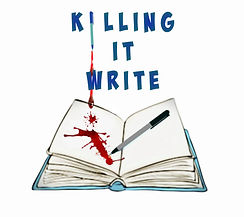WRITING WITH ALL FIVE SENSES
- Gina

- Jun 9, 2020
- 3 min read
Updated: Sep 14, 2025
Oh, the visuals!
Now, some of you may have heard me talk about this before, but visuals are more important than you can imagine. Without them, you will never fully pull your reader into your story. You just won’t.
Most, and I do mean most readers, are what I call visual readers. I’m one of them myself. We need to be able to see both the characters and the scenes in our mind’s eye. We need to hear their voices in our heads. We need to feel what the character is feeling. This is part of showing vs. telling.
If we cannot see the characters and the scenes, hear their voices, hear the sounds around them, and feel what the characters are feeling, we are not going to connect to the story. We are not going to be pulled in and made to feel like we are right there inside those pages. That’s when we close the book and put it down. You didn’t hook us. You didn’t pull us in.
Whereas a small minority of readers are not visual readers. They don’t care about description and may even sometimes skip or skim over it. For these readers, a lack of description doesn’t bother them, and by the same token, some description doesn’t bother them either. They will neither put the book down for lack of it, nor because of it. Unless you let your description go on too long, that is.
So do yourself a favor and don’t skimp on the visuals. At the same time, keep them simple but effective. How? When you’re focusing on your visual descriptions, keep in mind the five scenes.
Sight, Sound, Scent, Taste, and Touch
This is showing. This is how you pull your reader into the story. How you hook them on your characters and your story.
Don’t tell us the lemonade is sour. Show us by the pucker of his thin lips when he takes a swallow of the chilled lemonade. Show us how hot it is outside by the way he slides that icy glass across his wide brow while brushing back a thick lock of sweat-soaked dark hair, and the bob of his Adam’s apple as he drains the entire glass, relishing the cool liquid that drips down his chin. Let us see the shiver that runs down his lanky spine as he refills the glass and runs it over his dirt-smeared bare chest. Show us the scene as he yanks off his work gloves and slaps them across the thigh of his dusty jeans before pulling in a deep breath and inhaling the intoxicating scent of the rosebushes that border the garden path he’s been working on. And don’t forget the shovel or rake that leans against a thick tree trunk, or how the frantic twitter of the birds in the tree shading the table where he found the refreshment waiting for him has this character furrowing his brow, his annoyance evidenced by his throwing a rock up into the branches and yelling, “Shut up already!”
Can you see it all? Can you hear the birds? Smell the roses? Taste the lemonade? Feel the heat?
Without any of this, your story, your prose, has no life to it, and therefore, neither do your characters.
An analogy I use is to think of your story as a pot of stew. Your storyline or plot is your meat or main ingredient, your characters are your vegetables, and your descriptions are your spices. Without them, your stew is simply bland.
So, I repeat, don’t skimp or skip this most important aspect of writing. Your readers will not only thank you for it, but they’ll more likely be eager to revisit the next world you’ve created for them.








Comments